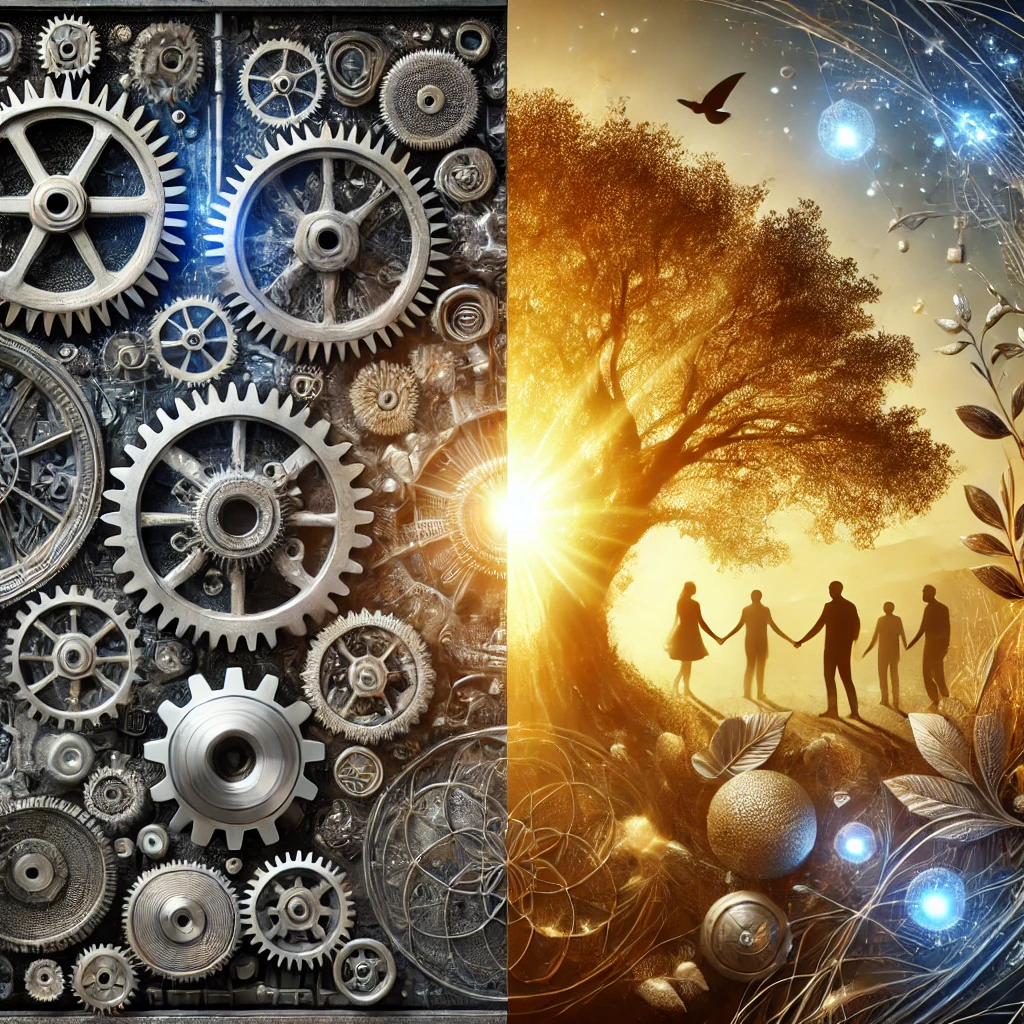1. Introduction – The Urgency of a New Model
The 21st century is redefining the role of companies. Climate challenges, accelerated technological transformations, and shifts in social expectations are calling into question the traditional business model — one centered on processes, profit maximization, and operational efficiency at any cost.
Companies that ignore this new reality risk losing relevance and even their social license to operate. As Frederic Laloux argues in Reinventing Organizations, organizations must evolve their management models, adopting a more human, adaptable, and purpose-driven approach.
2. The Organizational Paradigm Shift
The social function of companies today requires a profound change in mindset. This transformation can be observed across seven main dimensions:
| Traditional Model | New Model |
|---|---|
| Process-centered company | People-centered company |
| Profit as the ultimate measure of success | Purpose as the ultimate measure of success |
| Intelligence concentrated at the top | Collective and distributed intelligence |
| Minimal transparency | Maximum transparency |
| Short-term efficiency | Long-term resilience |
| Growth and competition | Conservation and collaboration |
| Focus on compliance | Focus on ethics |
Peter Senge, in The Fifth Discipline, highlights that learning organizations are those capable of integrating shared vision, team learning, and systems thinking — precisely what this new paradigm demands.
3. The Three Pillars of Corporate Social Function
This transformation rests on three interdependent pillars:
- User Experience – Companies must place humans at the center, designing products, services, and processes that create real value. C.K. Prahalad, in The New Age of Innovation, reinforces that co-creation between company and customer is essential for relevance and sustainable competitiveness.
- Empowerment and Engagement – Engaged people are the driving force behind any lasting change. Wikinomics, by Don Tapscott and Anthony D. Williams, shows how mass collaboration and open participation networks can generate innovations and results unattainable by isolated hierarchical structures.
- Literacy and Dissemination – Knowledge only creates impact when shared. Senge emphasizes that spreading learning and fostering a culture of continuous improvement form the foundation for innovation and organizational resilience.
4. Innovative Leadership as the Intersection
At the intersection of these three pillars emerges Innovative Leadership: inclusive, transparent, caring, eco-centric, visionary, creative, and human-centered.
Mike Rother, in Toyota Kata, demonstrates that effective leaders establish routines of continuous improvement, train teams to deal with uncertainty, and develop learning systems. This transforms leadership from a command role into that of a facilitator of change.
5. Impact Governance
Impact governance goes beyond traditional good governance: it integrates social, environmental, and ethical metrics into the core of strategic decision-making. It’s not about adding socio-environmental responsibility to operations but integrating it into the business model itself.
Brazilian examples such as Natura, Ambev Recicla, and Banco Palmas show that aligning purpose with operations is not only possible — it’s profitable in the long run.
6. Conclusion – The Call to Action
As summarized in the central statement of this reflection:
“Building a more sustainable future requires changing the way we produce, consume, and live.”
The social role of companies in the 21st century is not a marketing appendix or an isolated social responsibility program. It is a profound transformation of mindset, practices, and success metrics.
The question that remains for leaders and board members is simple yet challenging:
Is your company ready to trade short-term efficiency for long-term resilience?

